
Pink Lake
July 31st, 2010
Hard to believe I've lived in Ottawa all this time and never been to Pink Lake before. Well, I have now! For those of you who aren't locals, this is a stunningly beautiful, deep green meromictic lake in the Gatineau. Note to self: take parents during their visit. With any luck there will even be some fall colors up there by then.
I figured we wouldn't see many birds with so many noisy people around, but it was better than I expected. There was a Black-and-White Warbler, first spotted by Mike, numerous Belted Kingfishers taking advantage of the lake's bounty (at least around the edges, it was teeming with fish), and, most interestingly, a fledgling Brown-Headed Cowbird keeping company with a much smaller bird, a Yellow-Rumped Warbler who was clearly its foster parent!
This is that dastardly bird that I first described in this post. I've seen many cowbirds and I know what they do, but this is the first time I've seen the evidence for myself: the incongruous sight of a tiny warbler tending to a baby twice its size. It's odd that they never seem to smell a rat, not even once their young is practically full-grown and looks nothing like them.
Lord Turtle
July 26th, 2010
I took this at Mud Lake before leaving on vacation. (It then got preempted for about a month.) It's a Snapping Turtle sharing a log with several Painted Turtles. I never realized how threatening Snapping Turtles can look, and it's not just about their size. They're like something out of the Jurassic.

1680x1050 wallpaper
Vacation photos: final round-up
July 23rd, 2010

Common Loon
This was one of the biggest surprises of the week. I saw and photographed him from the dolphin-watching boat, but didn't realize what I had just photographed until I looked at the LCD. Loons are only expected at Outer Banks in winter and migration. This guy was supposed to be on some secluded mountain lake in Canada, not on the Roanoke Sound. I guess he (or she) was a nonbreeder who decided to linger on the wintering grounds.
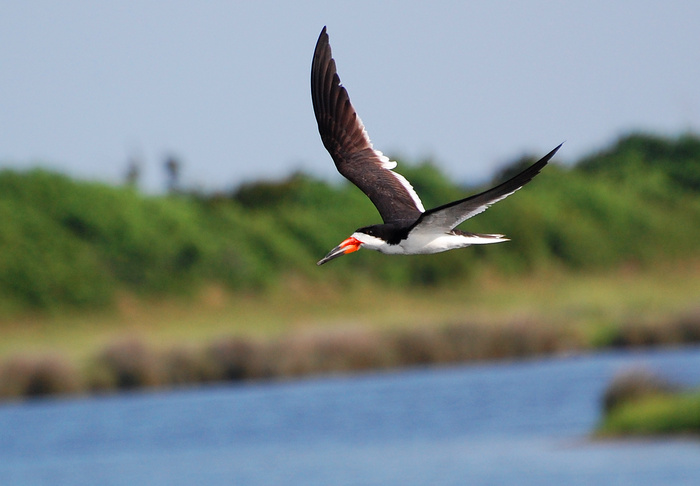
Black Skimmer, wallpaper available
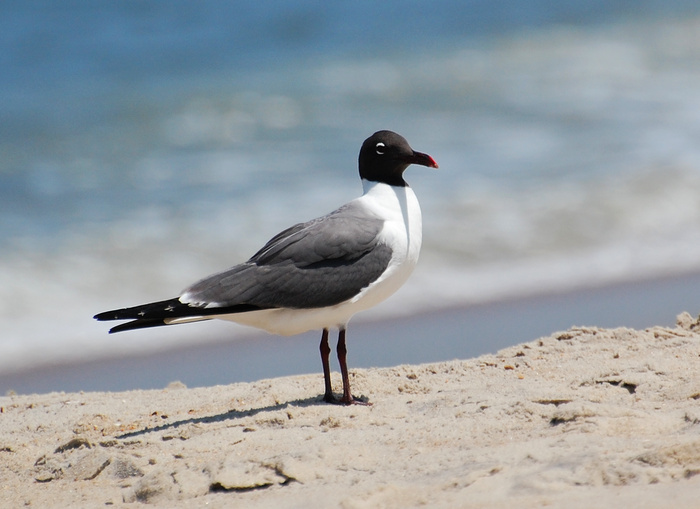
Laughing Gull, wallpaper available
THE Outer Banks gull. They share the beaches with smaller numbers of Herring Gulls and Great Black-Backed Gulls--but I can see both of those back home, so I don't focus my camera on them much. Like Ring-Billed Gulls, Laughing Gulls are quite tame, readily taking handouts from humans.

Common Wood Nymph
An abundant butterfly along the Pea Island boardwalk.

Northern Mockingbird
This is a common species throughout the southeast, but especially common in Outer Banks, I find. They must really like that coastal habitat.
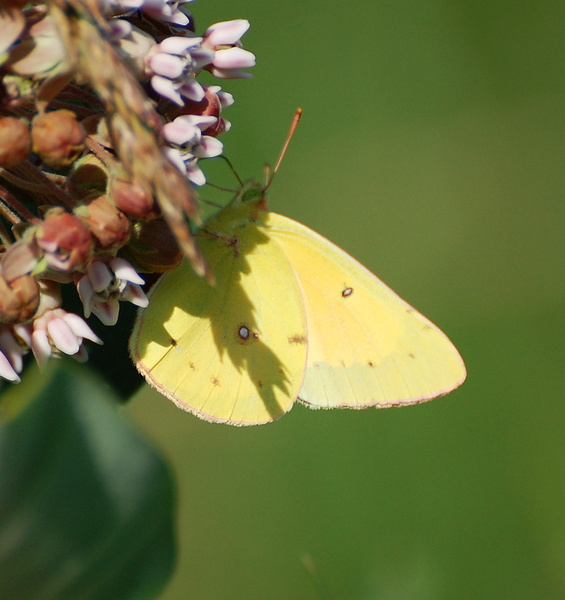
Clouded Sulfur

Silver-Spotted Skipper
( Triplist )
Some odes
July 22nd, 2010
A few interesting odonates (dragonflies and damselflies) from my vacation. The first two were photographed at Alligator River Wildlife Refuge, a place with a huge diversity of dragonflies.

Needham's Skimmer, wallpaper available
An exclusively coastal species that's easily mistaken for the more widespread Golden-Winged Skimmer. In fact, you may have seen me so mistake it if you read this entry within ten minutes of when I first posted it :-)

Blue Dasher, wallpaper available
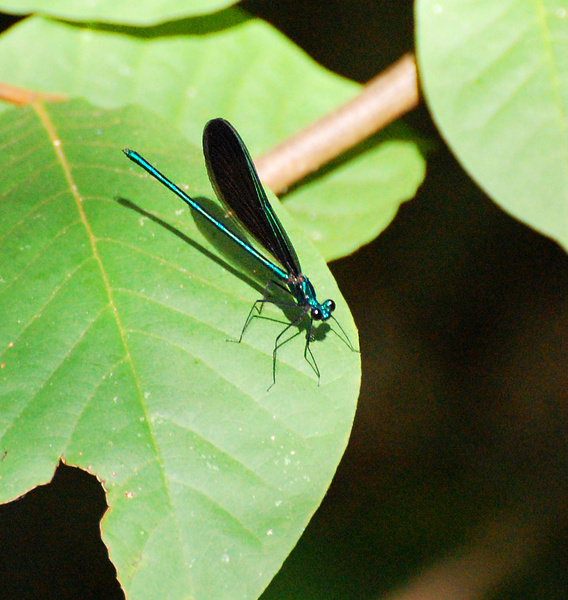
Ebony Jewelwing
I saw this one at Pocahontas State Park in Virginia, in the vicinity of Beaver Lake, and was fairly startled--I'd never seen anything like it before. Turns out it's a type of damselfly. Courtesy of Gillian, I now know we have them in Ottawa too!
Shirley's Bay Adventure
July 21st, 2010
Today I went birding at Shirley's Bay. It's only the second time I've done that, and my first time doing it solo.
Now, let me explain exactly what I mean by "birding at Shirley's Bay." There are trails at Shirley's Bay--nice, publicly accessible hiking trails that you can see on the Greenbelt map. And there's a boat launch and picnic area and so on. But if you're a birder--a serious birder--you're probably not interested in any of that. Here's what you do as a birder at Shirley's Bay:
You park at the end of Rifle Road and walk a short distance to a gate with a big, imposing "Department of National Defense" sign next to it. You go through the gate. You notice signs saying things like "no trespassing" and "danger - active shooting range", and disregard them. Then you waltz past the big sign saying "controlled access area" and "authorized personnel only." Oh, and "you may be searched at any time."
You turn onto a narrow dirt road, thumbing your nose at the two red "NO ENTRY" signs, continue on a ways, and finally, one last sign, "private property" (right next to something about poison ivy), tries to convince you to turn around, but you don't.
You do all this, mind you, after having obtained permission to do so. Still, if it's the first time you've ever done it solo, and you're me, you feel a little lurch in your stomach at every sign. You feel your heart beat. Fast.
You climb up onto the dike. And then...then, you're in heaven.
Kingfishers everywhere. Kingfishers flying right in front of your nose. Common Terns diving. Four Great Egrets (a rare species in Ottawa) out in the water and about three times as many Great Blue Herons. An Osprey flies by. Three deer--two adults and a spotted fawn--come up on the dike behind you, see you, think about it for a minute, and turn and run. And down in the shallows of the river, what you've really come here for: shorebirds. Dozens and dozens of shorebirds. The single best shorebird-watching spot in the entire city.
Just one thing about this mecca. Well, two things. One is the poison ivy. (I went in shorts. I probably shouldn't have.) The other is the ants. I recommend not setting your backpack down while you're on the dike. Because there are ants. Lots of them. They'll swarm up onto it. That webbing that you keep your drink in? They'll get all up in there. Then, when you put the backpack back on, they'll get in your shirt.
And they won't be happy about it.
So, in sum: an adventure! I finally listed Solitary Sandpiper and Pectoral Sandpiper, two lifers that have been a long time coming for me. I've never seen so many Lesser Yellowlegs in one place. I had no idea how noisy and argumentative that species could become in groups--the individuals I saw at Andrew Haydon Park were always quiet and graceful. At Shirley's Bay, it seemed there were so many of them they couldn't get along. The altercations were always in pairs: two birds facing off, staring each other down from an inch away, then leaping and fluttering, kicking at each other. Then more staring. Then more kerfuffle. This would go on until one of them decided that they were more interested in eating than fighting. At which point the other seemed to think "yeah, you have a point" and they both went back to probing the mud.
Like this. (I didn't take that photo--it's from the Ottawa Citizen and was taken by Francine Ouellette--but it's very similar to what I saw.)
I'm looking forward to bringing my camera back to capture those kingfishers.
I would add as a postscript that I love my country. Calling Range Control took some nerve. Because here I am...phoning up the freaking military...to ask them if I can go bird-watching on their property? They're going to tell me to get a life, right? But no. The voice on the other end was friendly. He agreed right away and I could tell he'd heard the request many times before.
This cordial relation between Ottawa birders and the DND is a very nice state of affairs. I hope it lasts.
Black Swallowtail
July 19th, 2010
Some butterflies look prettier from the underside.
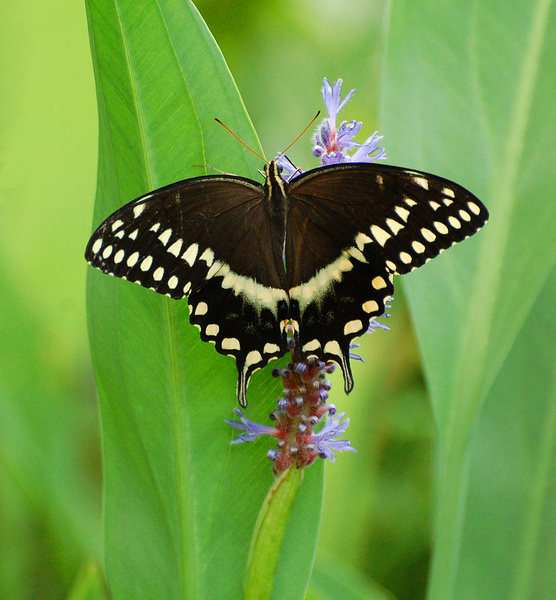

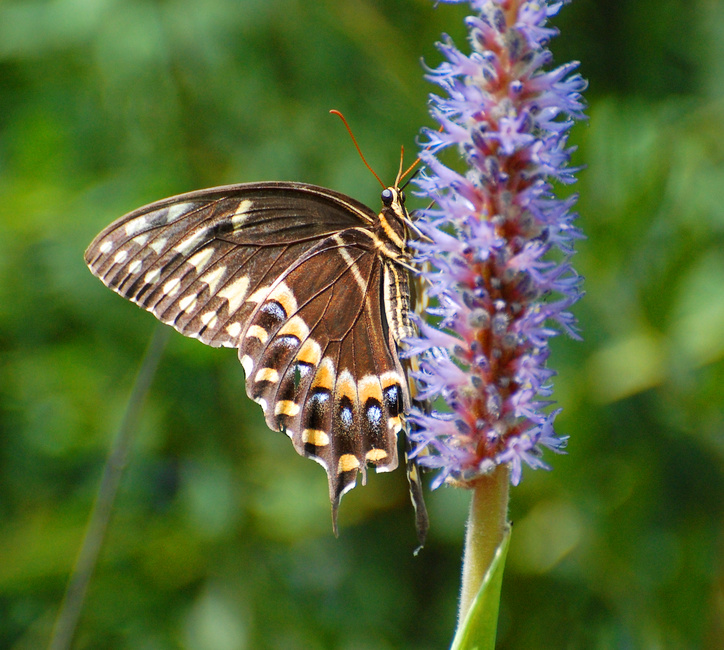
1680x1050 wallpaper
This is a particularly abundant species at Alligator River Wildlife Refuge, which is where these pictures were taken.
Water Snake
July 18th, 2010
I noticed this guy slithering along in the water while I was photographing skimmers at Pea Island. It's either an Outer Banks Kingsnake (an isolated subspecies of the Eastern Kingsnake that occurs only on the barrier islands) or a Carolina Water Snake (also an isolated subspecies.) I don't have the expertise to say which, and I've heard differing opinions from the experts. Feel free to chime in!
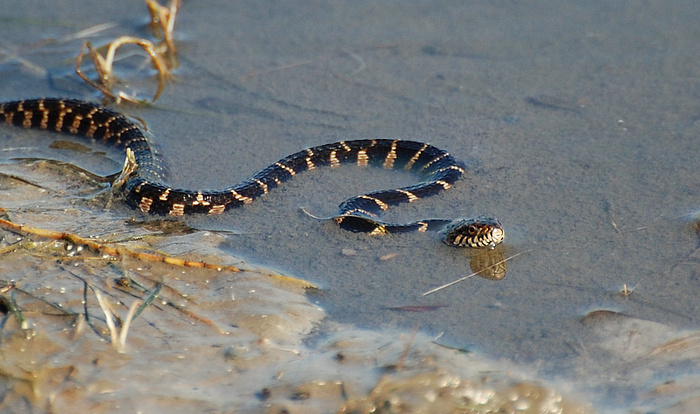
1680x1050 wallpaper
A face only a mother could love
July 17th, 2010
And now for a change of pace...
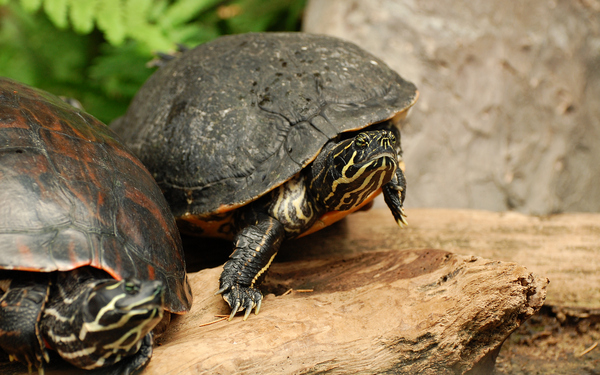
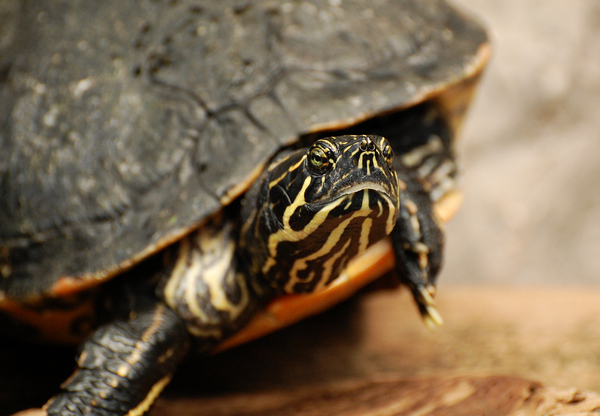
Photographed at the Manteo Aquarium. I was amused by this guy's curmudgeonly expression.
One good tern...
July 16th, 2010
While I was out on the river yesterday photographing sandpipers, a nearby pair of Common Terns was angrily harassing a gull. And they seemed none too happy about me, either--circling directly overhead, kee-arring loudly. So I took the hint, got a few good pictures and left.
Terns are largely oceanic birds, but this is one species that lives inland as well.
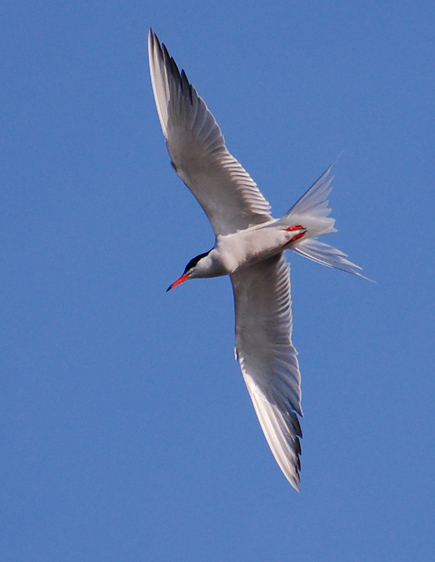
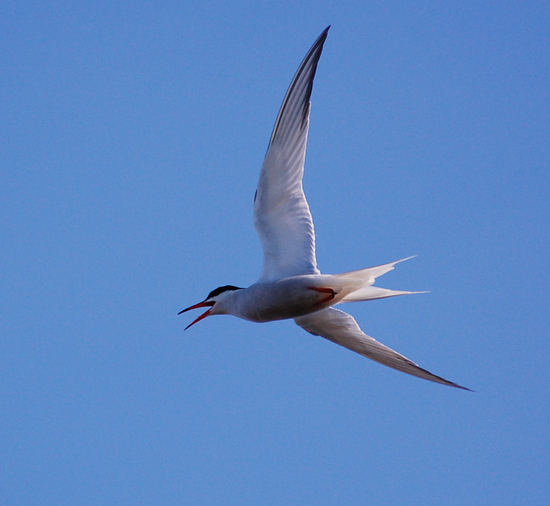
It wasn't until I looked at my photos back home that I realized why the pair was so defensive: they had a young un'! Standing on a little islet, apparently begging his parents for food. I didn't realize terns bred in that area.
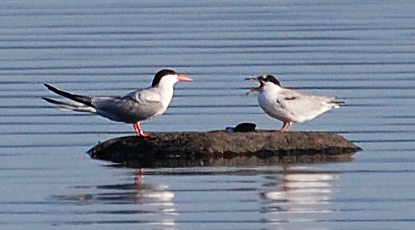
( Terns of Outer Banks )
A present-day interlude
July 15th, 2010
So, remember how I said sandpipers migrate really early?

Least Sandpiper
Low water levels on the Ottawa River have left behind extensive mud flats. This is great news for those of us who want to go shorebird-watching in late summer. Sandpipers and plovers are attracted to that kind of habitat, sometimes in large flocks. And even though it's only mid-July, the first wave of migrants shorebirds is now moving through.
At Andrew Haydon Park yesterday, a flock of several dozen Least Sandpipers was foraging in the mud and shallow water. This is one of an informal class of birds known as the "peeps": very small (sparrow-sized), very cute sandpipers that can be hard to distinguish from each other. Least Sandpipers are the easiest of them. They're the only ones (in our area) with yellow legs instead of black ones.
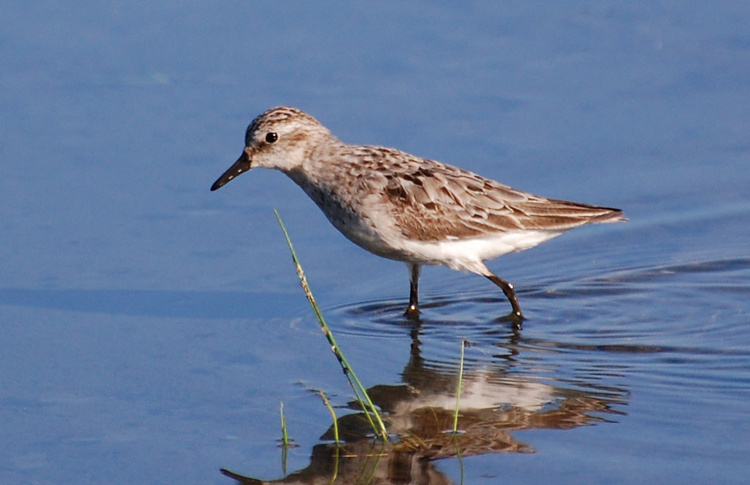
A few Semipalmated Sandpipers were mixed in with the flock. They're a little grayer and a shade bigger, but leg color is the most reliable difference.
Other early migrants included one Semipalmated Plover and one Lesser Yellowlegs, along with the usual, locally breeding Spotted Sandpipers and Killdeers. The Killdeers did the best they could to alarm everyone about my presence ("it's a human! it's a human! it's a human! it's a human! watch out! watch out! watch out!" Hey guys? Shut up.), but, I'm happy to say, none of the peeps got particularly alarmed. They allowed me to approach within ten feet of them and paid me little mind. Such tameness is typical of birds who breed in the far north, which many sandpipers do.
I went back today with camera in hand and got the above photos, but found, to my dismay, that the shorebird habitat at Andrew Haydon was getting swallowed up: the water level was rising. And I heard from a fellow birder yesterday that it had risen between then and the day before. This seems to happen to us every year. Just when it's getting good, boom, the river rises, the mud disappears, shorebirds go elsewhere. (Like to sewage lagoons for instance. I'm sorry, I may be a pretty insanely enthusiastic bird-watcher, but I'm not insane enough for that yet.) To mangle one of Jack Sparrow's favorite lines: "why is the mud always gone?"
The extensive shallows still make it easier to explore that stretch of river than it usually is, provided you have a good set of waterproof hiking boots and are willing to wade through muddy, buggy vegetation. If I did what I did today back in Virginia I'd've probably come back with tick bites, chigger bites, and furthermore dead because I'd have gotten bit by a water moccasin. There are advantages to living in the north.
|
